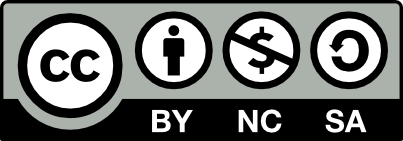/ Social movements during the North American military intervention in the Dominican Republic
Downloads
Abstract
During the first military intervention of the United States in the Dominican Republic, between 1916 and 1924, social movements expressing variants of resistance to the occupiers' program were characteristically activated. In essence, these movements existed since the years prior to the establishment of the military government, but from this they took on a significantly greater dimension and acquired new nuances. For this reason, the eight years that the occupation lasted were characterized by the intensity of social movements, which can be attributed to the combination of subjective elements introduced by foreign domination with the rejection of the completion of the modernization programs that had been outlined within the Dominican State since previous decades.
Keywords:
military intervention, United States, Dominican Republic, international conflictReferences
Las referencias, según el estilo de citación de esta revista, están como notas al pie.
License
Copyright (c) 1999 Journal ECOS UASD

This work is licensed under the Creative Commons Attribution-Noncommercial-NoDerivs 4.0 International license. https://creativecommons.org
Most read articles by the same author(s)
- Roberto Cassá, Historigraphy of the Dominican Republic , Journal ECOSUASD: Vol. 1 No. 1 (1993): ECOSUASD
- Roberto Cassá, Enriquillo Rebellion , Journal ECOSUASD: Vol. 29 No. 23 (2022): ECOSUASD
- Roberto Cassá , Rojas and Espaillat in the vortex of cibaeño liberalism , Journal ECOSUASD: Vol. 4 No. 5 (1996): ECOS
- Roberto Cassá , On the teaching of history , Journal ECOSUASD: Vol. 26 No. 17 (2019): ECOS
- Roberto Cassá, Bernardo Correa y Cidrón , Journal ECOSUASD: Vol. 21 No. 13 (2016): ECOS
- Roberto Cassá , Franklin Franco. The Era of Trujillo. Santo Domingo, Foundation Cultural Dominicana, 1992. 198 p , Journal ECOSUASD: Vol. 1 No. 2 (1993): ECOS
- Roberto Cassá , Genaro Rodríguez , Alternative considerations about the slave rebellions in Santo Domingo , Journal ECOSUASD: Vol. 2 No. 3 (1994): ECOS
- Roberto Cassá , One hundred years of the Russian Revolution , Journal ECOSUASD: Vol. 25 No. 15 (2018): ECOS
- Roberto Cassá , Riot and strike: the protest of the poor dominicans , Journal ECOSUASD: Vol. 3 No. 4 (1995): ECOS
- Roberto Cassá, Manuel de Jesús Mañón Leased. Chronicles of the Primate City. Santo Domingo, National District City Council, 1992 , Journal ECOSUASD: Vol. 1 No. 2 (1993): ECOS
Similar Articles
- Luis Alfonso Escolano Giménez, The annexationist tendency as a constant in the 19th century’s Dominican politics , Journal ECOSUASD: Vol. 28 No. 21 (2021): ECOSUASD
- Reina Rosario, The dominican Catholic Church and its relationship with the State (1954-1968) , Journal ECOSUASD: Vol. 21 No. 13 (2016): ECOS
- Franklin Franco Pichardo, Foreign debt and the creation of the monetary and banking system in the "era of Trujillo" in 1947 , Journal ECOSUASD: Vol. 18 No. 10 (2010): ECOS
- Rafael Darío Herrera, The first government of Juan Isidro Jimenes or the failed search for the desired order , Journal ECOSUASD: Vol. 30 No. 25 (2023): ECOSUASD
- Ernesto Guevara, Commander Che Guevara before the Assembly United Nations General , Journal ECOSUASD: Vol. 26 No. 18 (2019): ECOS
- José Antinoe Fiallo Billini, September 11, 2001: capitalism, war and politics , Journal ECOSUASD: Vol. 11 No. 9 (2003): ECOS
- Francisco Antonio Avelino, Elogio y crítica del pensamiento de Américo Lugo Praise and criticism of Américo Lugo´s thought , Journal ECOSUASD: Vol. 1 No. 2 (1993): ECOS
- Quisqueya Lora H., “We too are the People”: The Artists’ Commando in the War of april 1965. , Journal ECOSUASD: Vol. 28 No. 21 (2021): ECOSUASD
- Roberto Cassá , One hundred years of the Russian Revolution , Journal ECOSUASD: Vol. 25 No. 15 (2018): ECOS
- José Antinoe Fiallo Billini, Nationalism and liberalism: recovering your thought and organization for the construction of a popular strategy today , Journal ECOSUASD: Vol. 6 No. 8 (1999): ECOS
You may also start an advanced similarity search for this article.









